
A strainer is a helpful kitchen appliance that comes in handy while separating liquid from solid food items without waste. But the absence of strainers is felt the most while preparing pasta.
However, there are several other clever ways to strain your foods without a strainer. Sounds impossible? You’ll be amazed as the following article contains the 13 best methods to strain without a strainer.
Additionally, it contains tips that can help you filter out pasta, soups, juice, tea, and coffee. Moreover, we have also taught how to make a tea strainer at home with a coke can. Read on and find out how.
13 Life-Saving Hacks To Strain Food Without a Strainer
In place of a strainer, you can use a variety of tricks and ways. According to your preferences and needs, we’ve provided several options. Examine them all and use them if required.
1. Tongs
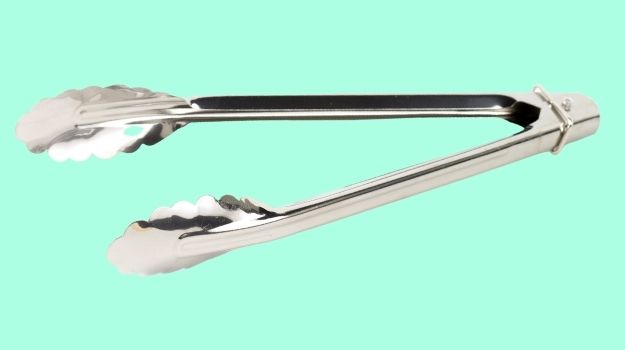
You can try tongs if you want to remove water after perfectly cooking your spaghetti. It can work as a suitable replacement in the absence of a strainer.
All you have to do is seize all noodles or pasta with the help of a tong and hold it for a few minutes so that water drains off the food. And then simply put it into another plate.
If you’re moving long noodles, I’d recommend putting the tongs in and twisting them so that all of the noodles spin around the tongs fast and then letting the water drain for a few minutes. You can get a lot of noodles in one go this way.
Another way to strain pasta or noodles from the pot is to tilt it and hold it. Well, you have to hold the food item with the help of your tongs and then tilt the pot and remove the water. In this way, you can easily remove pasta and noodles.
2. Slotted Spoon
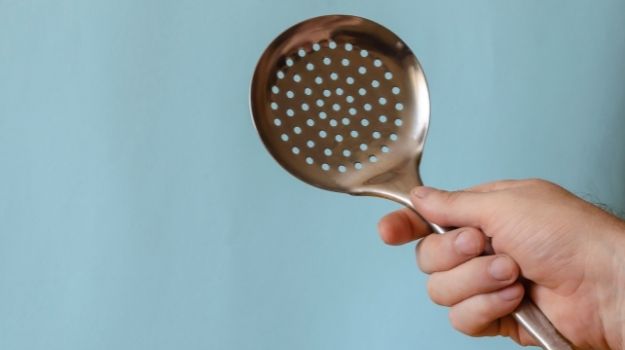
If you want to strain beans, veggies, or pasta, then a slotted spoon will do the trick. It may take a little time, but we can still fix this.
You have to scoop out your food from the vessel and let the water get out of the hole. And then put your food on a dry plate.
It’s not great if you’re straining like stock or a meal with small particles because it will pass right through the slotted spoon.
Therefore, use the other trick. Just tilt your vessel and drain any excess water before extracting all of the beans or pasta with a slotted spoon.
3. Lid
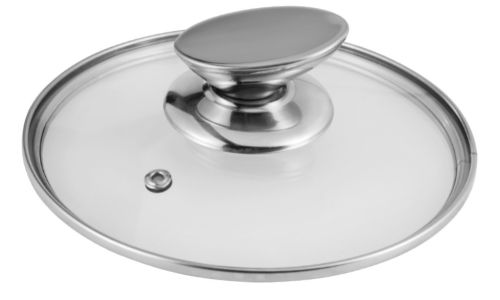
You can use your pan lid to drain pasta without a strainer.
After you’ve finished boiling the pasta, put the pan in the sink and fill it with more tap water until it reaches the top of the pan (this will assist in cooling down the hot vessel), then cover it with the lid.
Now take the cloth and hold the pan’s handles and tilt it while covering the lid. Create a gap to decant all the water right away. And you can easily separate pasta and water in a few minutes.
4. Cheesecloth
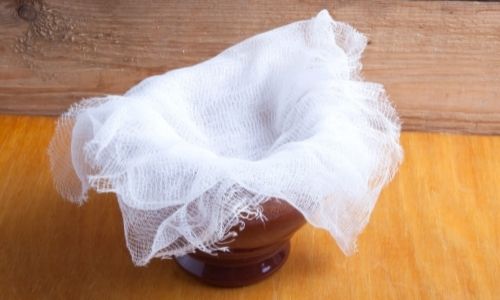
Cheesecloth is a thin, open-textured cotton gauze fabric that you can use to strain the stock.
Using the cheesecloth trick is very effective, especially when trying to strain small particles.
Generally, as the name suggests, it is used for straining cheese, but you can also use it as a strainer alternative for veggies and fruits.
To use cheesecloth as a strainer, just wrap it around the top of the pot and hang it over the kitchen sink. Place your hands appropriately and use a potholder to avoid burning your hands.
This approach takes a little longer to filter the water, so make sure to take the help of your family or friends to squeeze both sides of the cheesecloth using two kitchen utensils.
You can use this alternative to filter out fruit juice as well.
5. Coffee Filters

Who doesn’t like filter coffee, cold coffee, or dark coffee, isn’t it?
Well, it is true because, according to coffee consumption stats, 65% of the total population in the US is into this beverage.
If you also love the process of coffee making, then you must have lots of coffee filters at home, right?
So, our next stainer alternative is a coffee filter. I know what you are thinking now. We can’t use it for straining beans or veggies.
You can use this alternative to filter loose tea or small food options.
It’s best if you have unbleached filters. Even if you don’t, you can still fix it.
So, to get rid of the papery taste, all you have to do is clean the filter sheets with hot water.
Put the loose leaf in the filter and pour it into a mug. Allow brewing. Pour boiling water over the tea in a circular motion.
Remove the filter with leaves after the tea is brewed. And now, you can sip and enjoy your tea time with some snacks.
6. Bandana
You must be amazed reading this option on our list, right? How can a fashion accessory be used as a strainer? Well, that’s why it’s a life hack, after all.
You must use your headband scarf as a strainer, just like the coffee strainer. But, make sure to use the new one that you have never worn before.
7. Dish Towels
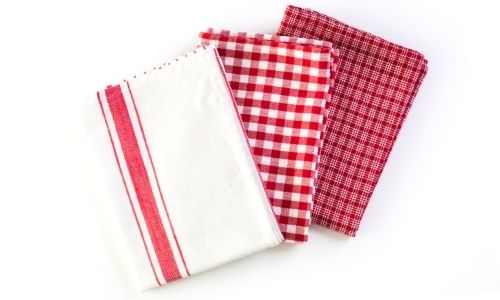
Just like a bandana, you can also use new clean dish towels to strain the tea, coffee, and fruit juice. The process is the same as we have mentioned above.
8. Pantyhose
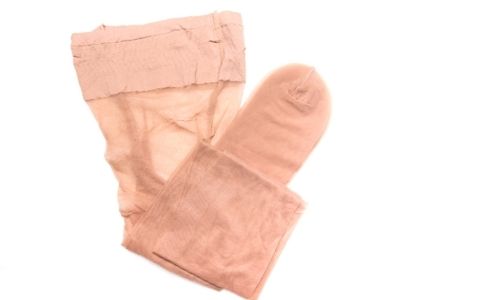
One more bizarre life hack for straining your food is using pantyhose. Yes, your tights can also work as a strainer alternative in the kitchen. You just have to spread the cloth over a large mixing bowl.
You may also make a spice pouch by chopping off one of the feet, stuffing it with herbs, and tying it shut. Clean the pantyhose and reuse them when needed.
Isn’t it easy and quick? Well, make sure to use new and clean pantyhose.
9. Fine Mesh Bag

Another substitute for a strainer is a fine mesh bag. You can use it for tea, stocks, or rinse veggies, fruits, and beans.
You can also try it and use it for sparging, as it’s excellent for sprinkling liquids on dishes or beverages while cooking.
Without the use of heavy metal strainers, you can also use the material of fine mesh bags to separate particles from liquids during brewing, winemaking, and nut milk processing.
10. Gaiwan
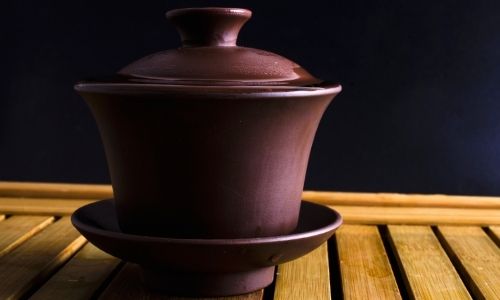
Gainwan is a three-part traditional Chinese tea brewing utensil with a lid, bowl, and saucer. If you enjoy tea and have a gaiwan, you can also use that instead of the strainer.
So, to use a gaiwan, all you have to do is put some loose tea in the small pot and add hot water, then cover it with a lid. Then decant all the brewed tea from the gaiwan into your teacup.
And, if you don’t have a gaiwan, don’t worry. We have an answer for that as well.
Simply use boiling water to make the tea in a mug. When the tea is ready, strain it into a serving cup using a tiny plate to catch the leaves.
11. Paper napkins
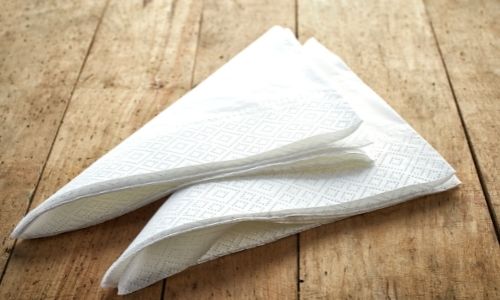
Paper napkins can also help you strain tea and coffee or filter out the oil after deep frying. The process is akin to coffee filters. But, one thing you have to bear in mind is that you should always choose a top-notch quality paper towel.
If you use low-quality paper napkins while straining the tea, they can break and fall into your cup.
Note: Paper towels contain minute fibers that may alter the flavor of your tea. As a result, they must first be cleansed in hot water.
To use it as a filter, you have to fold the paper towel in half to produce a rectangle, then fold it in half again.
After that, open the square corner and place the loose tea leaves in a mug. Fill the teapot half along with boiling water and steep for several minutes.
And, you are ready with your refreshing tea.
12. Double cup method
Another trick that will not require a sieve to make a hot cup of tea is the double cup method. It is simple and quick, and anyone can do this at home.
You will need two mugs, that’s it, and a serving cup. Take one cup and put hot water and loose tea leaves. After that, when you are done brewing, keep the second mug clean and ready.
While putting the tea into the clean mug, slightly submerge the cup in the mug. It will function as a barrier, preventing the loose leaves from hitting the mug.
Note: This trick can be a little messy. You may need a few practice sessions. Also, make sure you don’t burn your hands with hot water.
13. Spoon
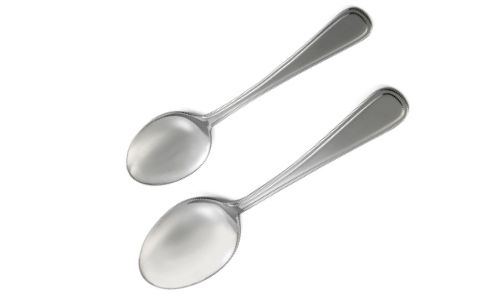
A spoon can also help you separate beans, veggies, and tiny pasta without using a strainer.
Make sure to use a big spoon. It will help you to do filter out things quickly.
Note: This method cannot work to strain noodles because they will easily glide off the spoon. So instead of that, you can use a big fork.
Now you know all the methods so far. But do you want to learn how to make your own tea filter? Scroll down for the answer.
How to make a tea filter at home?
This hack can be your lifesaver when you don’t find a sieve at home to prepare tea.
Well, to make this simple tea filter, all you need is a coke can, a fine needle, and a plier.
Take an empty coke can and horizontally cut it into half. Throw away the upper part because we will only need the bottom one.
Then flip the can and, with the help of a needle, make fine holes at its bottom.
You will require additional force to make holes in the can. Thus, use a plier and tap on the head of a needle.
Make enough holes for water to flow freely out of it. Then, flip the can over and cut the rim vertically.
After that, bend the cuts. They’ll resemble square petals. This will make it easier for the strainer to sit on top of the mug (this will work as a stand, you will not require to hold it with your hands). That is all there is to it. Your task has been completed.
Once your tea is brewed, place your DIY tea strainer on the mug and pour some tea. You will notice that all the loose leaves will settle on the strainer, and tea will easily slide off in the mug.
Yay, your tea is ready to relax your soul.
Difference Between Colander and Strainer? Are colander and strainer different?
Both of them are used as separators, but they are used for different things. A strainer is used for separating small solid stuff from a liquid. It has holes in it or is built of crossed wires.
And colander is used for rinsing vegetables or straining foods like pasta. It looks like a bowl with lots of big size holes.
How can you strain coffee without a strainer?
You can reuse tea bags for filtering coffee. Just open the pouch, add some ground coffee, and seal it. Then put it in your cup along with boiling water. Let it rest for some time to brew well. And after that, you can remove the teabag and enjoy your coffee.
How to strain juice without a strainer?
To strain juice without a fine mesh, you can mix a little soda with your fruit juice. The pulp will float to the top because of the bubbles. After that, scrape away the top layer of pulp.
FAQs
Can I use a paper towel to strain tea?
Yes, you can use a paper towel to strain the tea. Start by folding the paper towel in half and folding it again till you get a square shape. Open one corner and place the loose tea left. Place it in the mug and pour the water to brew the tea.
Can you strain oil through a paper towel?
Yes, you can strain oil through the paper towel. Start by pouring the oil into small batches to avoid any overflow. Once the oil is strained, close the lid, and you’re done.
Can you strain coffee with a paper towel?
Yes, you can strain coffee with a paper towel. Fold the paper till you get a square shape. Place the coffee ground in the middle of the paper in your pot. Brew the coffee and enjoy.
Well, that’s a wrap!
You can use many alternatives in place of a strainer and sieve. If you want to separate pasta, veggies, noodles, or beans, you can use tongs, a big spoon, a large fork, slotted spoons, or a lid.
If you want to filter out tea, coffee, or juice, you can reuse tea bags, gaiwan, paper napkins, dish towels, and fine mesh bags.
If you use a paper towel, clean it in hot water before filtering out because it holds minute fiber which can change the taste of your tea, juice, or coffee.
Well, if you know of any other life hacks, please share them with us in the comment section below.



